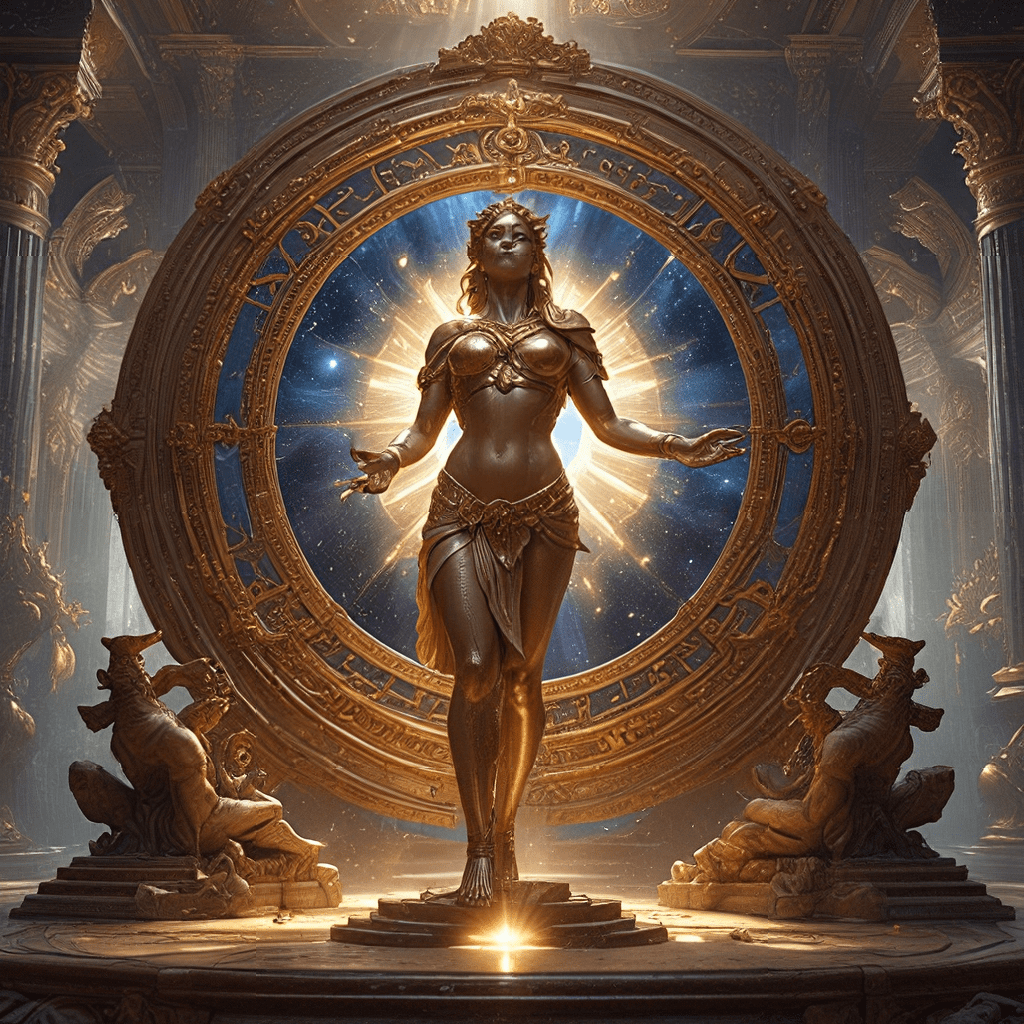The Divine Order: The Harmony of the Universe in Mythology
1. Introduction: The Quest for Order
Humans have an innate desire to understand the world around them. From the earliest civilizations, people sought answers to fundamental questions: Why is the sky blue? How do seasons change? What happens after death? Mythology, with its captivating stories and powerful characters, provided a framework for understanding the universe and the human experience. Across cultures, a central theme in mythology is the concept of “divine order.” It’s a belief that the cosmos, from the smallest atom to the vast expanse of stars, is governed by a harmonious and divine plan.
2. Cosmic Order: The Blueprint of Creation
Creation myths, found in almost every culture, describe the birth of the universe and the establishment of cosmic order. These stories often feature powerful deities who shape the world and its inhabitants. In ancient Greek mythology, for example, Gaia, the Earth Mother, and Uranus, the sky god, give birth to the Titans, who later fight with the Olympians, establishing a new order. Across these narratives, a common theme emerges: the importance of balance and hierarchy in the cosmic order. The gods and goddesses reside atop the hierarchy, maintaining the delicate equilibrium of the universe. Their actions, their roles, and their interactions define the fabric of reality.
3. Order in the Human Realm: Social and Moral Frameworks
Myths not only guide our understanding of the universe but also provide moral frameworks for human behavior. These narratives often include divine laws and punishments for those who break them. The Greek goddess Themis, for example, represents divine law and order, while the consequences of violating these laws are often severe. The story of Pandora’s Box highlights the dangers of curiosity and disobedience, serving as a warning against transgressing the divine order. Mythology also emphasizes the importance of rituals and ceremonies in maintaining order. Festivals, sacrifices, and prayers are often seen as ways to honor the gods and ensure continued harmony.
4. The Sacred and the Profane: Boundaries of Order
Myths also define the boundaries between the sacred and the profane. Certain places, objects, and practices are designated as sacred and are held in reverence, while others are considered ordinary or profane. Ancient temples, for example, were often considered sacred spaces where humans could connect with the divine. Likewise, certain objects, such as fetishes or amulets, possessed a sacred power and were used for protection or ritual purposes. By maintaining these boundaries, societies sought to uphold the divine order, recognizing the power of the sacred and the dangers of crossing its boundaries.
5. Cycles of Time and the Renewal of Order
Mythology often reflects cyclical patterns and the renewal of order. Myths frequently feature stories of seasons changing, of life and death, of creation and destruction, all serving as reminders of the cyclical nature of time. Ancient Egyptian mythology, for example, features the god Osiris, who represents both death and rebirth. His cycle of death and resurrection symbolizes the renewal of the natural world. The importance of festivals and rituals marking seasonal changes reflects the belief that these activities help maintain the divine order and ensure its continuation.
6. Chaos and Disorder: Threats to the Divine Order
While mythology emphasizes order, it also acknowledges the existence of chaos. Certain figures and events represent disorder and threaten to disrupt the cosmic balance. In Greek mythology, the monster Typhon, who challenges Zeus for supremacy, embodies the forces of chaos. The story of the Trojan War highlights the devastating consequences of human ambition and hubris, which disrupt the divine order. These narratives emphasize that chaos is a constant threat, and heroes and heroines often emerge to restore order and fight against those who seek to destroy it.
7. The Power of Myth: Shaping Beliefs and Values
Mythology has a profound impact on shaping cultural values and beliefs. The concept of divine order, for instance, often translates into specific social structures and practices. Hierarchy, respect for authority, and the importance of tradition are all rooted in the idea of a divinely ordained order. Mythological narratives serve as guides for understanding the world and our place within it. They offer explanations for natural phenomena, provide moral frameworks, and reinforce societal values. Even today, the enduring legacy of myths continues to influence our understanding of the universe, our interactions with each other, and our search for meaning and purpose.
8. Comparative Analysis: Similarities and Differences in Divine Order
Examining the concept of divine order across different cultures reveals fascinating similarities and differences. Most mythologies feature a hierarchy of gods and goddesses, a belief in cosmic balance, and a focus on maintaining order through rituals and ceremonies. However, the specific details and interpretations vary widely. Norse mythology emphasizes the cyclical nature of time and the inevitability of Ragnarok, a mythical event that will bring about the end of the world. Native American mythology often features complex creation stories and a deep respect for nature. Comparative analysis helps us appreciate the diversity of human perspectives and the universal human experience of seeking order and meaning in a chaotic world.



